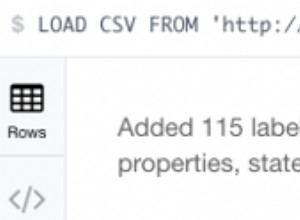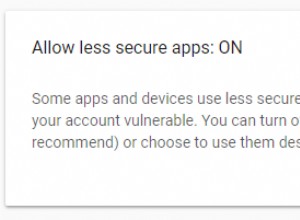W Androidzie jest to klasa pomocnicza, która ma klasę nadrzędną Sqlite, która ma wszystkie elementy członkowskie danych i funkcje umożliwiające dostęp za pośrednictwem tej klasy.Dzięki tej klasie możesz czytać, pisać i otwierać dane.Aby dowiedzieć się więcej na ten temat, przeczytaj ten link
http://www.codeproject.com/Articles/119293/Using-SQLite-Database-with-Android
Aby połączyć się z bazą danych potrzebujesz obiektu Connection. Obiekt Connection używa DriverManager. DriverManager przekazuje nazwę użytkownika bazy danych, hasło i lokalizację bazy danych.
Dodaj te trzy instrukcje importu na początku kodu:
import java.sql.Connection;
import java.sql.DriverManager;
import java.sql.SQLException;
Aby skonfigurować połączenie z bazą danych, kod jest następujący:
Connection con = DriverManager.getConnection( host, username, password );
Zobacz ten przykład
try (
// Step 1: Allocate a database "Connection" object
Connection conn = DriverManager.getConnection(
"jdbc:mysql://localhost:8888/ebookshop", "myuser", "xxxx"); // MySQL
// Connection conn = DriverManager.getConnection(
// "jdbc:odbc:ebookshopODBC"); // Access
// Step 2: Allocate a "Statement" object in the Connection
Statement stmt = conn.createStatement();
) {
// Step 3: Execute a SQL SELECT query, the query result
// is returned in a "ResultSet" object.
String strSelect = "select title, price, qty from books";
System.out.println("The SQL query is: " + strSelect); // Echo For debugging
System.out.println();
ResultSet rset = stmt.executeQuery(strSelect);
// Step 4: Process the ResultSet by scrolling the cursor forward via next().
// For each row, retrieve the contents of the cells with getXxx(columnName).
System.out.println("The records selected are:");
int rowCount = 0;
while(rset.next()) { // Move the cursor to the next row
String title = rset.getString("title");
double price = rset.getDouble("price");
int qty = rset.getInt("qty");
System.out.println(title + ", " + price + ", " + qty);
++rowCount;
}
System.out.println("Total number of records = " + rowCount);
} catch(SQLException ex) {
ex.printStackTrace();
}
// Step 5: Close the resources - Done automatically by try-with-resources
}




